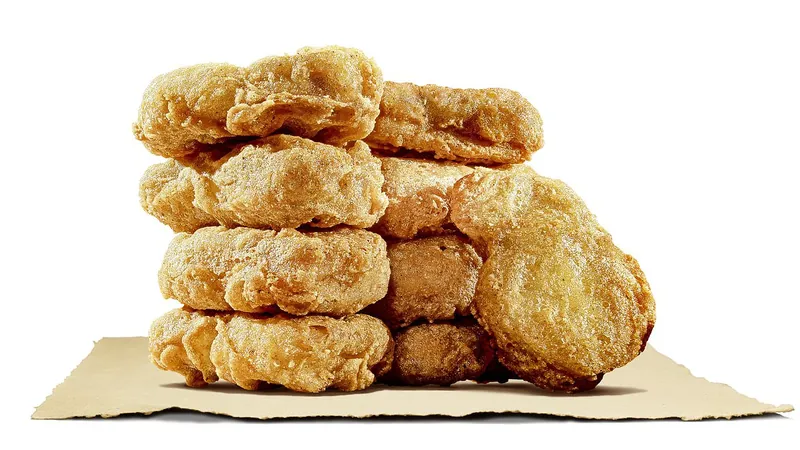
Beware These 12 'Healthy' Foods Packed with Cancer-Causing Microplastics: Discover Simple Swaps to Protect Your Health!
2025-03-29
Author: Wei
Many foods that are often celebrated for their health benefits may come with a hidden danger: microplastics. These minute pieces of plastic, measuring less than five millimeters, are becoming increasingly common in our environment, infiltrating our air, water, soil, and ultimately, the food we consume. Unfortunately, many health-conscious individuals may unknowingly ingest these harmful particles, which have been linked to a range of health problems, including cancer and DNA damage.
What Are Microplastics?
Microplastics are tiny plastic particles that have become pervasive in our daily lives. They enter the body through contaminated food sources, leading to potential health risks. Certain foods are more likely to contain higher levels of microplastics due to processes like industrial farming, packaging, and environmental contamination. Here are 12 'healthy' foods that are alarmingly loaded with these pollutants, along with effective alternatives to help reduce your intake.
1. Carrots
Packed with vitamin A, carrots are vital for numerous bodily functions, yet they also harbor significant amounts of microplastics absorbed from the soil and water. To maintain your vitamin A levels, consider replacing them with leafy greens like spinach or colorful bell peppers.
2. Plant-Based Nuggets
Initially viewed as a healthy alternative, plant-based nuggets often contain the highest levels of microplastics due to their processing and plastic packaging. Instead, make homemade versions using fresh ingredients like tofu or quinoa to minimize exposure.
3. Apples
The saying “an apple a day keeps the doctor away” may be outdated, as apples are reported to contain more than 100,000 microplastic particles per gram. Opt for antioxidant-rich fruits like blueberries or pomegranates to stay healthy while cutting down on plastic.
4. Rice
While rice is a staple source of carbohydrates, it can also introduce significant plastic consumption, especially in instant varieties. Washing rice thoroughly before cooking may reduce plastic content by up to 40%. Consider alternatives like quinoa or barley for a lower plastic intake.
5. Bottled Water
It’s no surprise that bottled water is a major contributor to microplastic consumption; studies show one liter can contain around 240,000 plastic particles. Ditch the bottles and switch to a reusable water bottle with a built-in filter to ensure cleaner hydration.
6. Ready-to-Eat Salads
Convenience doesn’t come without a price—ready-to-eat salads often contain plastics leached from their packaging. Prepare your own salads at home with fresh, organic vegetables to be both healthy and plastic-free.
7. Seafood
With microplastics increasing in oceans, seafood is no exception. Clams, mussels, and even fish are heavily contaminated. Reducing seafood consumption and choosing sustainable sources can help limit your microplastic exposure.
8. Pink Himalayan Sea Salt
Although touted for its mineral content, Pink Himalayan salt can surprisingly be high in microplastics due to its harvesting methods. Processed table salt tends to contain fewer plastics, so consider this option when seasoning your meals.
9. Processed Dairy
Conventional dairy products may carry high amounts of plastics. Opting for organic, locally-sourced dairy can be a healthier choice, both for you and for the environment.
10. Tea in Nylon Bags
Those convenient nylon tea bags release billions of microplastics when steeped. Switch to paper tea bags or loose-leaf options to enjoy your tea without the extra plastic.
11. Seaweed
A common ingredient in Asian cuisine, seaweed is unfortunately not immune to microplastics. Consider using wraps made from rice paper or lettuce instead of seaweed to enjoy sushi without the added plastic concern.
12. Honey
Curiously, honey is susceptible to microplastic contamination due to polluted foraging environments. Sourcing honey from rural areas can significantly reduce your risk of consuming plastic particles.
Conclusion: Stay Informed and Make Smart Choices
While it's nearly impossible to eliminate microplastics from your diet entirely, being informed about which foods are most contaminated and making conscious swaps can significantly reduce your exposure. Stay vigilant about your food sources and opt for fresh, minimally processed options whenever possible to safeguard your health against the dangers of microplastics. Your body will thank you!



 Brasil (PT)
Brasil (PT)
 Canada (EN)
Canada (EN)
 Chile (ES)
Chile (ES)
 Česko (CS)
Česko (CS)
 대한민국 (KO)
대한민국 (KO)
 España (ES)
España (ES)
 France (FR)
France (FR)
 Hong Kong (EN)
Hong Kong (EN)
 Italia (IT)
Italia (IT)
 日本 (JA)
日本 (JA)
 Magyarország (HU)
Magyarország (HU)
 Norge (NO)
Norge (NO)
 Polska (PL)
Polska (PL)
 Schweiz (DE)
Schweiz (DE)
 Singapore (EN)
Singapore (EN)
 Sverige (SV)
Sverige (SV)
 Suomi (FI)
Suomi (FI)
 Türkiye (TR)
Türkiye (TR)
 الإمارات العربية المتحدة (AR)
الإمارات العربية المتحدة (AR)